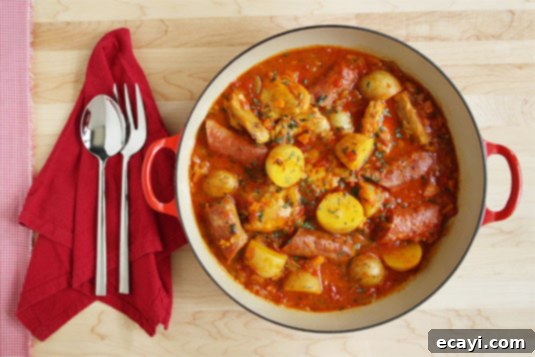Jacques Pépin’s Weeknight Chicken Bouillabaisse: An Easy French Classic Bursting with Flavor
This post contains affiliate links. Full disclosure is at the bottom of the article.
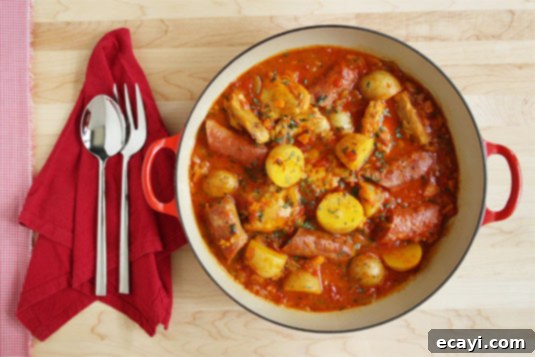
My earliest memories of culinary inspiration are deeply intertwined with the flickering glow of the television screen in my childhood home. I must have been in my early teenage years, a budding food enthusiast already captivated by the magic unfolding in cooking shows. Our home featured an inviting open-plan layout, where the kitchen seamlessly flowed into the dining and living areas. This meant the television, often broadcasting in the living room, was a constant companion to our kitchen activities. My mother, a natural multi-tasker whose talent for juggling two things at once I happily inherited, and I would frequently find ourselves immersed in cooking or baking sessions while a culinary program played in the background. Reflecting on those days, it’s striking how most Quebecois cooking shows of that era were fronted by genial homemakers rather than formidable professional chefs. Their approach was inherently warm, practical, and incredibly approachable, making home cooking feel less like a daunting task and more like an everyday pleasure.
My mother possessed an almost intuitive culinary wisdom. As we watched, she would often scribble down recipes that caught our eye, her notes a testament to her mastery. I recall poring over her sparse annotations – a list of ingredients, perhaps an oven temperature or a cooking time – and feeling a profound sense of how much I still had to learn. For her, these brief cues were enough; she inherently understood the underlying techniques, rendering detailed instructions unnecessary. Her culinary philosophy also embraced improvisation, a delightful habit of making each recipe her own by subtly altering an ingredient or reimagining its presentation. This flexible approach to cooking was another invaluable lesson she implicitly passed on.
As my teenage years progressed, my curiosity led me to occasionally explore American television channels. This opened up a new world, offering an exciting advantage: access to popular teenage shows long before their Canadian-French dubbed versions would eventually air. My grasp of English was still nascent, but I possessed an insatiable hunger to learn, driven particularly by a desire to comprehend the lyrics of the music that blared from my room or Walkman daily. It was amidst this linguistic exploration that fate intervened. One quiet afternoon, I distinctly remember tuning into PBS, and quite serendipitously, I stumbled upon a cooking show unlike any I had seen before: the inimitable Jacques Pépin was on screen.
The experience was immediately captivating, a blend of intimidation and profound mesmerization. It was a revelation – the first time I witnessed a man cooking on television, and not just any man, but a chef whose movements were incredibly fast, fluid, and instinctual. What truly struck my young, impressionable mind, however, was his pronounced French accent. At that age, many of my peers, including myself, shared a similar “bad” French accent when attempting English, coupled with a far more limited vocabulary. This made us acutely shy and often hesitant to speak English, especially in public. I vividly recall the mortification of being required to speak English in front of thirty other French-speaking students; the mere thought of addressing thousands of viewers, as Jacques Pépin did, was utterly inconceivable. Yet, paradoxically, his accent made him remarkably easy for me to understand, as he articulated words in a manner that resonated with my own developing pronunciation. Watching him, a “real chef” in action, I felt a distinct sense of maturity, as if I was privy to a sophisticated world of culinary artistry.
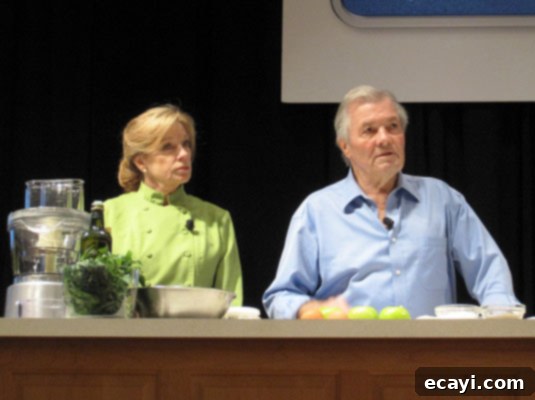
Given this formative background, it’s perhaps easier to comprehend the sheer significance of encountering Jacques Pépin in person a few weeks prior, at the International Association of Culinary Professionals (IACP) conference in Austin. For me, it was nothing short of a historical, almost surreal, moment. I was genuinely astonished by how ageless he appeared, looking precisely as I remembered him from fifteen years ago. On stage, he commanded the space with an effortless grace that belied the speed of his actions. I watched, mesmerized, as he cooked with a captivating blend of precision and intuition. His hands moved with astonishing dexterity, often serving as improvised spatulas to swiftly empty mixing bowls, or perhaps more famously, dipping a finger directly into the concoction to taste and adjust seasoning with a knowing nod. Ingredients were cut with a confident, almost brusque efficiency, and entire dishes seemed to materialize in mere seconds. He was every bit the quick, direct, and nonchalant culinary master I remembered, expertly fielding questions from the audience while simultaneously conjuring five distinct dishes within an hour. Witnessing his enduring performance, so consistent with the legend I had watched on screen, was profoundly reassuring. And as I sat among a crowd of fellow culinary professionals, rather than on my childhood couch, I indeed felt a powerful sense of having come full circle, truly “grown up” in the world he helped inspire me to join.
Later, at the bustling book fair, I had the immense pleasure and distinct honor of meeting him face-to-face. It was a cherished opportunity to converse with him, fittingly, in French, for a precious few minutes. I found myself uttering what felt like rather unoriginal sentiments, expressing how profoundly inspiring he had been as a culinary role model throughout my formative years. Yet, he received my words with genuine kindness, his demeanor much gentler and softer-spoken than the dynamic persona he projects while performing on stage. That brief, meaningful interaction, a personal connection with a lifelong inspiration, is a moment I will undoubtedly carry with me and cherish for the rest of my life.
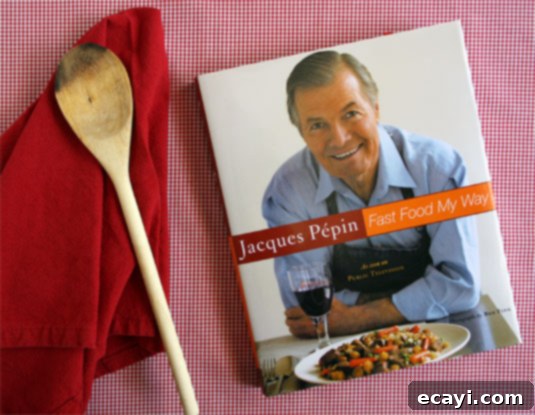
Jacques Pépin’s culinary philosophy, so beautifully encapsulated in his book *Fast Food My Way*, is a revelation for home cooks. This compendium is more than just a cookbook; it’s a masterclass in his natural, unfussy yet inherently elegant style. Pépin brilliantly demonstrates that exquisite food doesn’t require hours of toil or obscure ingredients. His recipes are designed for efficiency without compromising on flavor or sophistication, proving that French culinary excellence can be made accessible to all. *Fast Food My Way* transcends the traditional boundaries of purely French techniques, fearlessly integrating diverse culinary inspirations to create dishes that are both innovative and deeply satisfying. From tantalizing starters to hearty main courses, his creations are designed to be revisited time and again, becoming cherished family favorites. While some recipes, like his “Instant Beef Tenderloin Stew” and the ambitious “30-Minute Cassoulet,” might sound almost too good to be true in their promise of speed, every dish I have personally attempted from this remarkable book has consistently delivered on both its pledge of simple execution and its guarantee of exceptional taste. It’s a testament to Pépin’s genius: making sophisticated cooking attainable for everyday life.
To truly convey the essence of his transformative culinary approach, I am delighted to share a classic French recipe, the illustrious **Bouillabaisse**, reimagined and perfected “the Jacques way.” The traditional Bouillabaisse, a celebrated fish stew hailing from the sun-drenched coastal regions of Provence, France, is renowned for its rich flavors, aromatic saffron, and fresh seafood. Pépin, with his signature ingenuity, has skillfully adapted this beloved classic into a chicken version, making it even more versatile and perfect for a weeknight family meal. His adaptation retains all the iconic flavors while streamlining the process, resulting in a dish that is remarkably simpler, significantly faster to prepare, yet every bit as profoundly flavorful as its seafood counterpart. While the ingredient list might initially appear extensive, don’t be deterred; the beauty of this recipe lies in its swift assembly and a remarkably short 30-minute cooking time. This is a dish that truly embodies Pépin’s philosophy: gourmet results with everyday ease.
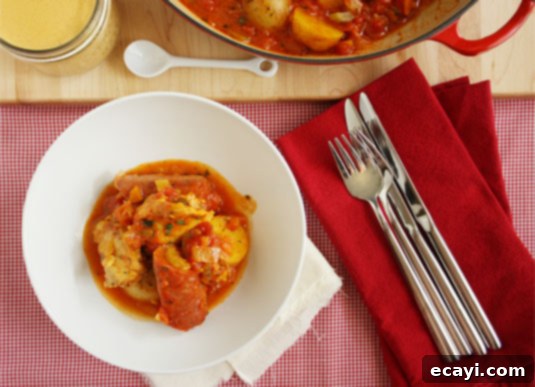
Essential Tips for Crafting Jacques Pépin’s Flavorful Chicken Bouillabaisse
This exquisite Chicken Bouillabaisse draws its inspiration directly from the iconic fish stew of Southern France, a culinary jewel of the Mediterranean. Chef Pépin masterfully incorporates all the classic, evocative seasonings that define this regional specialty, most notably the precious **saffron**. Often regarded as the world’s most expensive spice, saffron is far more than just a vibrant colorant; its distinct floral, slightly sweet, and earthy notes are utterly indispensable to the authentic character of bouillabaisse. For the most profound flavor, seek out high-quality saffron threads, with Spanish varieties being particularly renowned for their potency and aroma. This dish provides a magnificent canvas upon which saffron’s unique qualities can truly shine.
While fresh tarragon is listed as an optional ingredient, its inclusion is highly recommended. Tarragon contributes a subtle, delicate anise-like flavor that beautifully complements the other robust seasonings in the stew, adding another layer of aromatic complexity without overpowering the dish. Beyond the stew itself, the experience of Bouillabaisse is incomplete without its traditional accompaniment: **rouille**. This rich, garlicky mayonnaise, typically infused with the warming heat of cayenne pepper and the smoky depth of paprika, is not merely a condiment. It acts as a vibrant counterpoint, offering a creamy texture and piquant kick that elevates every spoonful of the bouillabaisse. Prepare it fresh for the best results, as its robust flavors are key to the overall enjoyment of this French classic.
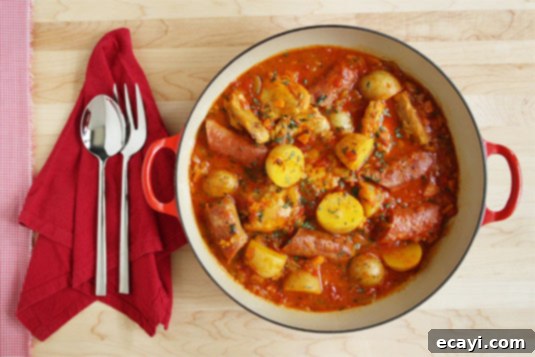
Pin Recipe
Chicken Bouillabaisse
Ingredients
For the chicken bouillabaisse
- 1 tbsp extra-virgin olive oil
- 2 cloves garlic, minced
- ½ tsp saffron threads
- 1 tsp finely grated lemon zest
- ¾ tsp kosher salt, or fine sea salt
- ½ tsp freshly ground black pepper
- ¼ tsp fennel seeds
- ¼ tsp herbes de Provence
- ½ cup diced onion
- ¼ cup diced celery
- ¼ cup diced carrot
- 1 ¾ lb chicken thighs, skin and fat removed (about 4 chicken thighs)
- 1 can (14 oz / 414 ml) diced tomatoes
- ½ cup dry white wine
- ¾ cup water
- ¾ lb red or yellow Yukon gold potatoes, peeled and halved (about 5 potatoes)
- 1 (about 10 oz) kielbasa sausage, cut into 4 pieces, or substitute any cooked smoked pork sausage
- 2 tsp Pernod or Ricard (optional)
- 1 tbsp chopped fresh tarragon, chives, or parsley
For the rouille
- 2 large garlic cloves
- Pinch cayenne pepper
- ¼ tsp smoked paprika
- 1 large egg yolk
- ½ cup extra-virgin olive oil
- Pinch kosher salt,
Instructions
For the chicken bouillabaisse
-
Mix the olive oil, garlic, saffron, lemon zest, salt, pepper, fennel seeds, herbes de Provence, onion, celery, and carrot in a large bowl. Add the chicken and turn to coat. Cover and refrigerate until you are ready to cook (at least 20 minutes). This step can be done up to 8 hours in advance.
-
Transfer the contents of the bowl to a Dutch oven or a stainless steel pot and add the tomatoes, wine, water and potatoes. Cover, bring to a boil over high heat, then reduce the heat to low and boil gently for 25 minutes. Add the sausage and cook for 5 minutes longer. If adding Pernod, stir it in now with the tarragon.
For the rouille
-
Remove half a cooked potato and 1/4 cup (60 ml) liquid from the pot and place in a food processor with the garlic, cayenne and paprika. Process for 10 seconds. Add the egg yolk. Then, with the processor running, slowly pour in the oil and process for a few seconds, or until incorporated. Taste for salt and add some, if needed.
-
Serve the bouillabaisse in warmed soup plates with a spoonful of the rouille drizzled on top.
-
Recipe Credit: Adapted from Fast Food My Way by Jacques Pépin.
Did you make this?
Tell me how you liked it! Leave a comment or take a picture and tag it with @foodnouveau on Instagram.
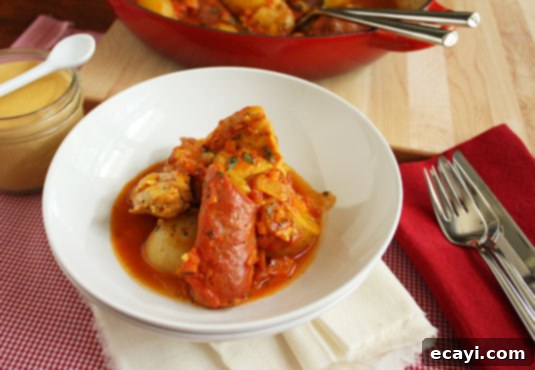
This site is a participant in the Amazon Associates Program, an affiliate advertising program designed to provide a means for the site to earn fees by linking to Amazon and affiliated sites.
If you click on an affiliate link, I may earn advertising or referral fees if you make a purchase through such links, at no extra cost to you. This helps me creating new content for the blog–so thank you! Learn more about advertising on this site by reading my Disclosure Policy.
